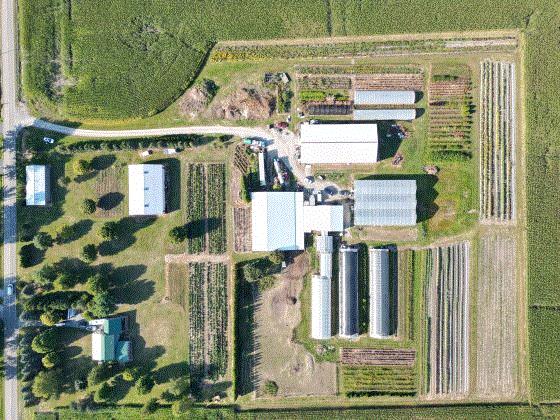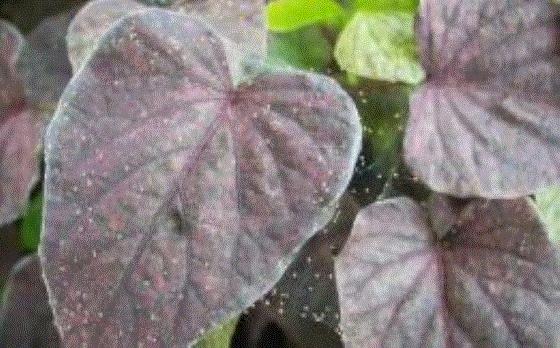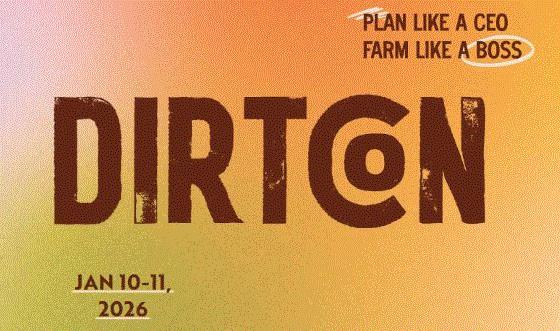September Farm Update

This time of year, it’s easy to forget how far we have come in just a few short years. Which is why it was a true joy to see this overhead photo of our little farm! Nine years ago, I had no idea that this is where we would be. Don’t take for granted where you are now. We worked every day since we started the farm to move the needle in this direction. I truly believe the diligence is starting to pay off.
I read a post on Instagram today that said, “Starting a small business is ten years of breaking down walls and taking shrapnel.” True! As romantic as starting a flower farm sounded in the beginning, I’m glad I didn’t know a fraction of the hardships that we have gone through up to this point. But what do they say—iron sharpens iron. I wouldn’t trade these experiences for anything, because I know we will be conditioned to take on the next set of challenges. We are all in the thick of it. I just urge you to take stock in how far you’ve come, and I promise you if you focus on doing the next right thing, over time your diligence will pay off.
Tater and I are relieved that we received our ranunculus early last week so we could get our Valentine’s Day succession in the mill. Shout out to our friends at Ednie Flower Bulbs for making some magic happen and making sure we got what we needed.
In the meantime, we are trying to keep the mildew off the outdoor dahlias. It’s been a challenge. The last two weeks we have had lows in the low to mid 40’s and low dew points, which are perfect conditions for powdery mildew to set in. We are doing everything we can to keep the dahlias comfortable and churning out blooms, because the dahlia craze is very real, and we are counting on these beauties to continue to flower for at least three more weeks. It’s a sprint to the finish line for peak season!
While we are feverishly cutting dahlias and sunflowers, it’s also time to sow cool-loving annuals such as feverfew, foxglove and rudbeckias. Now is the time to plan for your cool flower successions—you will thank yourself early next spring! Let’s finish strong, Tater and I know you can do it!
In this edition of Bloom Beat we are covering spider mites, Dirt Con 2026 and more! With all that being said, let’s talk shop!

New Spider Mite e-GRO Alert

Severe spider mite infestation on ipomea. Photo by Dan Gilren E Gro Alert
If you have ever grown dahlias under cover, there is a high probability that you have seen spider mites. To be honest, spider mites are the bane of my existence during the summer months. Spider mites thrive in hot dry conditions and of course, they love dahlias! Tater and I have a small indoor crop of dahlias for after frost and spider mites have been an ongoing battle.
Chemistries can be rather limited for treating spider mites, and populations of spider mites that are resistant to certain chemicals are becoming more common. So I was thrilled to stumble upon this new e-GRO Alert by Dan Gilrein from Cornell talking about the importance of incorporating horticultural oil sprays into your IPM plan for spider mites. Because, let’s face it, it’s hard to develop resistance to smothering! Dan recapped his experience helping a grower resolve a heavy spider mite infestation. Here are the takeaways:
- Using a 1% concentration of horticultural oil is a reliable contact kill of mites and eggs, especially if you suspect the spider mite population is resistant to certain FRAC groups.
- It’s still important to scout the crop after applying horticultural oil to keep track of the populations that may have survived because of poor coverage.
- Check your sprayer and nozzles to ensure maximum coverage.
- Dipping cuttings before sticking can also eliminate spider mites and eggs to reduce carryover onto your crop.
- Dan observed spider mites present on poinsettia cuttings under mist. Overhead irrigation and misting isn’t a reliable control for spider mites.
- Controlling the weeds around your greenhouse is critical. Mites can overwinter on broadleaf weeds and serve as a source of inoculum the following season.
- When spider mite populations are low, introducing predatory mites, such as P. persimillis and incorporating compatible sprays can be a great strategy.
Read the full e-GRO Alert
HERE. Your dahlias will thank you!

USDA Ends "Dated" Farm Labor Survey
Earlier this month, USDA’s National Agricultural Statistics Service (NASS) announced that it will no longer conduct its Farm Labor Survey. The Farm Labor Survey (FLS) was used to set the Adverse Effect Wage Rate (AEWR) for the H-2A program. Instead, the Department of Labor’s Occupational Employment and Wage Statistics (OEWS) program can fulfill the same duty as the FLS, and with greater accuracy.
The USDA deemed the FLS, whose origins go back to the 19th century, as “dated” and “not designed for the current state of agriculture or labor.” For instance, the FLS did not account for data from farm labor contractors and relied solely on information collected directly from farmers. The OEWS survey, on the other hand, accounts for data from farm labor contractors.
So what does this mean for farms that use the H-2A program? That is to be determined, but Tater and I talked to a few farm labor contracting firms, and they believe this could be a positive change for farms using the H-2A program.
You can read the full notice on the Federal Register HERE.

Colombia Floriculture Market Size and Share Analysis
During a late-night scrolling session, Tater and I stumbled upon USDA’s National Ornamental Weekly Movement Summary and the numbers on this
REPORT are mind-blowing!
Overall, the report shows the “season-to-date” numbers for crops such as roses already surpassed 2024 consumption. And the U.S. imported 50 million more hydrangea stems compared to 2024. That’s just hydrangeas!
Overall, U.S. floral consumption is increasing, and the United States–Colombia Trade Promotion Agreement is favorable to Colombian flower imports. Flowers are a global commodity. As local flower farmers, I think it’s important to understand the cut flower economy on a global scale. Tater and I found this
REPORT by Mordor Intelligence on the state of Colombian floriculture and projected growth for 2030. You can glean quite a bit of information from the preview of the report. Here are some highlights:
- Colombian floral exports to the U.S. for 2025 are expected to be $1.98 billion dollars and are expected to grow to $2.42 billion dollars by 2030.
- Growth of e-commerce floral delivery platforms and AI-driven demand forecasting by grocery stores are expected to increase the demand for Colombian flowers.
- Sustainability labels, such as Florverde, are becoming more common for Colombian growers, which resonates with U.S. consumers and can command premium prices.
- Improved packaging technology, such as individual stem hydration packs, allow for better vase life for the consumer, which makes flowers better able to handle longer shipping distances.
Going forward, it will be even more important to anticipate how Colombian imports will shape the floral landscape. I know our little farm will never make a dent in the import market. If nothing else, this report shows that consumers are buying more flowers, and the trend is expected to continue. Stake claim to your small piece of the pie, and keep growing the best, pristine blooms. If you market them, they will sell!

Introducing DirtCon 2026

Mark your calendars for the first DirtCon virtual conference January 10-11, 2026. Lyndsay Biehl and Shannon Allen of the Dirt on Flowers are the masterminds behind DirtCon, which will be focused on "Farming with a plan."
Lyndsay and Shannon are flower farmers in Ohio, and their podcasts are chock full of relevant and timely information for flower farmers of all sizes. Most importantly, they cover all sorts of topics, ranging from business, marketing, crop culture and crop planning. Tater and I are avid listeners and enjoy Lyndsay and Shannon’s commentary each week, and we have high hopes that Dirt Con will be incredibly insightful as well.
Tickets go on sale October 3. Tater and I look forward to a cozy day or two listening to the conference from the comfort of our couch and warm fireplace!
For a sneak peek of their speaker lineup, check out the link
HERE and scroll down the page a bit. You can also sign up for early bird registration. “Dirt Bag” tickets are $99 and attendees can view all sessions live during the event. “Dirt Boss” tickets are $149 and include lifetime access to the recordings as well as all speaker handouts and workbooks. “Dirt Boss” attendees also have the opportunity to win a scholarship to one of Lyndsay and Shannon’s upcoming classes.
I commend Lyndsay and Shannon for creating this event!

We're Cheering For You!
Lindsay Daschner (and Tater)
Editor-at-Large—Bloom Beat
Owner—Forget-Me-Not Farms
This email was received by 6,252 of your fellow fresh-cut flower growers!
If you're interested in advertising in Bloom Beat, contact Kim Brown and she will hook you up!